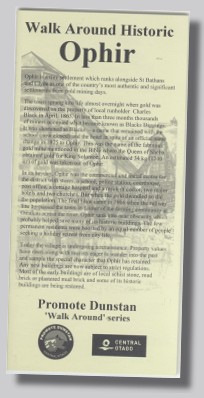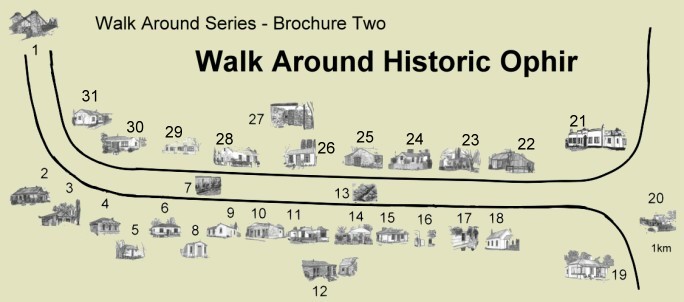| |
1. Daniel O’Connell Bridge (1880)
The predominantly Irish population of Ophir named the bridge after the Irish patriot Daniel O’Connell. Crossing the Manuherikia River, it is one of the last surviving suspension bridges in Central Otago. The single-lane wooden bridge was designed by the Vincent County engineer L.D. Macgeorge. A whole roasted bullock and a hogshead (238 litres) of ale was consumed to celebrate its opening. It was rebuilt with steel in 1905.
(Top) |
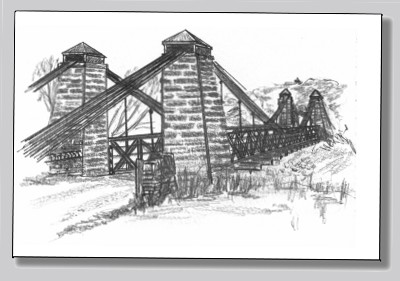 |
| |
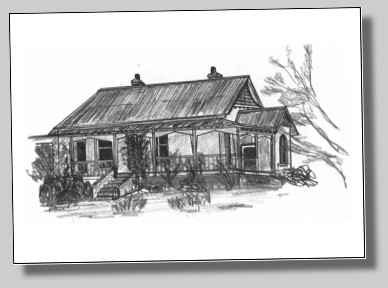 |
2. Former Catholic Church (1880)
The former St Peter’s Catholic church, enclosed by a handsome stone wall, served the community for nearly 50 years. Services ceased with the 1929 opening of the larger St Peter’s in Omakau. It was bought by Bob Craig, the local butcher and farmer who converted the stone building into a private residence.
(Top) |
| |
3. Ophir Hall (1926)
The hall was built by local builder John McKnight and named the Ophir Peace Memorial Hall. It has an excellent dancing floor with the boards being only 5 cms (2 inches) wide. It is still the centre of community life and is used for many functions and events.
(Top) |
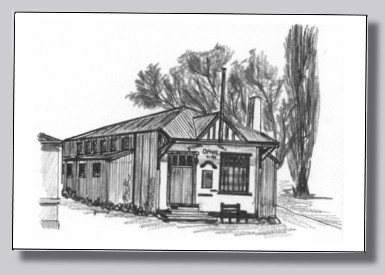 |
| |
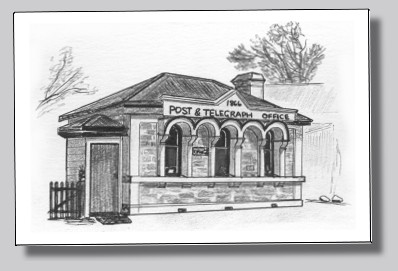 |
4. Ophir Post Office (1886)
One of the most photographed buildings in Central Otago, it replaced an earlier structure. Construction was done by Leslie Arthur and Company of Cromwell for three hundred & twenty-three pounds, six shillings and nine pence (nearly $800.00). By 1976 it future was under threat but the New Zealand Historic Places Trust took over the building. It still operates as a Post Office agency opening for 3 hours each day between 9am and noon. Take a minute to look at the memorabilia on display, buy a postcard and have it stamped with the Ophir date stamp.
(Top) |
| |
5. Jail (c1882)
This small wooden 2 cell jail was possibly located between the policeman’s house and the courthouse. It was moved in 1939 when a new police station was built in Omakau. Just over sixty years later and after a fundraising campaign by the Ophir Welfare Committee in 2002, the jail was purchased and moved back to its current site behind the Post Office.
(Top) |
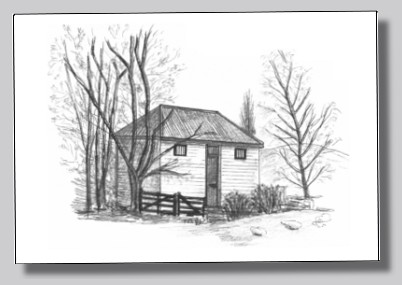 |
| |
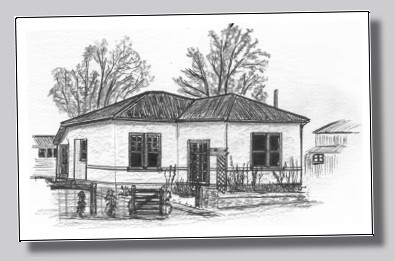 |
6. Post Office House (1909)
Now substantially modified with an addition to the front, the house for a resident post office attendant was built for two hundred and seventy pounds and 12 shillings (about $542.40). (Not open to public).
(Top) |
| |
7. Stone Kerbing (1880’s)
Pause a moment to look at the original schist stone kerbing leading to the Courthouse and the former policeman’s house. It was laid to mark the street boundary. The kerbing in other historic parts of the main street (Swindon Street) is being restored.
(Top) |
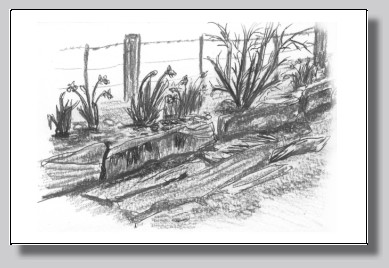 |
| |
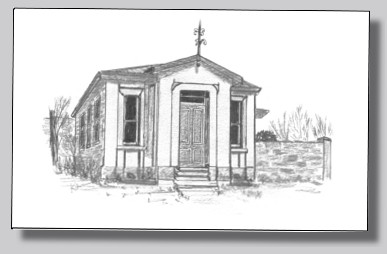 |
8. The Courthouse (1884)
The old courthouse heard many cases involving disputes over mining claims, water rights and later on, land titles. The building reflects the optimism of the nineteenth century that Ophir would remain a town of substance long after the gold ran out. This building of pointed and dressed stone with a smooth plastered face to the street is the same design as the Alexandra and Clyde courthouses. (Not open to public)
(Top) |
| |
9. Policeman’s House (1870’s)
The house is an oddity built in half stone and half timber. It served as the police station until replaced by one in Omakau. (Not open to public)
(Top) |
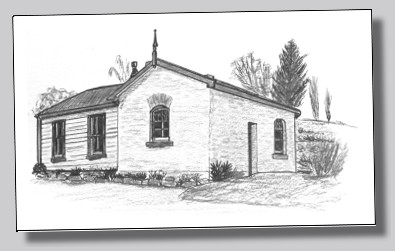 |
| |
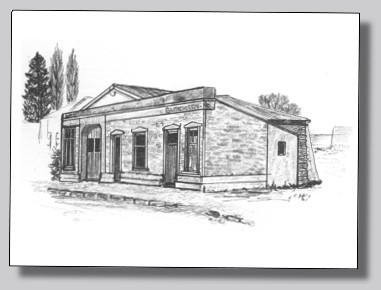 |
10. Pitches Store
This large stone building was originally built for an early resident, John Pitches, who ran a grocery shop in one part and a butchers shop in another. He lived in the residential part. Remembered as a benevolent man, he was prominent in all Ophir projects. The building’s roof and shop front were altered when it was converted to a service station in the 1960’s but there are plans to restore it to its original design.
(Top) |
| |
11. The Bank (1886)
At one stage, Ophir had two banks but only one has survived. The former Bank of New South Wales building had an office at the front and a residence behind. It has been substantially modified since its conversion to a private home.
(Top) |
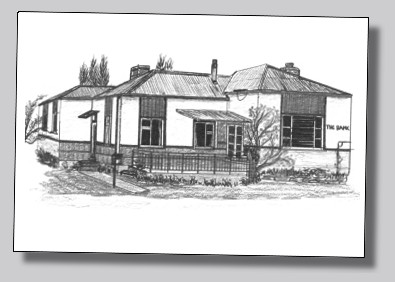 |
| |
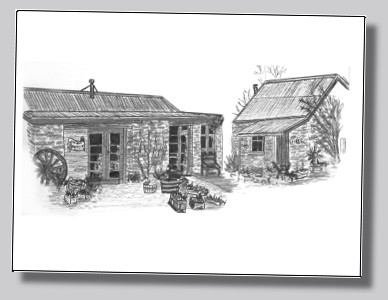 |
12. The Bakery (1880’s)
The smaller of this pair of stone buildings was once the town’s bakery run by Bryan Flannery. It is recorded Mrs Flannery took exception to rugby games played on a nearby paddock and she chopped down the goal posts to stop them playing! The larger building was a stable and then a workshop. Both buildings were restored and converted to a restaurant-café in 2004. It is now a homestay.
(Top) |
| |
13. Sluice Channels
Between the Café and Ryan’s Cottage are the remains of a sluice channel. Water was a vital ingredient for the miners because it was used to separate the gold from the gravel. The waste was discharged into the Manuherikia River by sluice channels. The remains of old gold mining races which brought water to the diggings can still be seen cutting across hillsides.
(Top) |
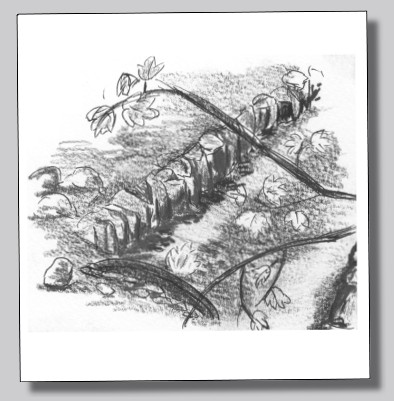 |
| |
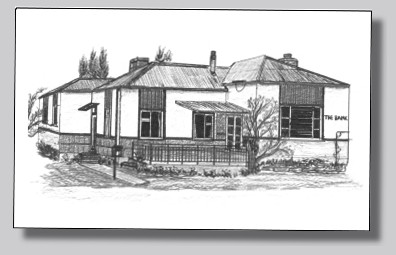 |
14. Ryan’s Cottage
This mud-brick and timber faced cottage replaced a hotel owned by Robert Ryan from 1873 to 1890. The ruins to the side of the cottage are thought to have been the hotel stables. The cottage has a colourful past and was once a dressmaker’s shop, a cobblers, and, in the early days, a brothel.
(Top) |
| |
15. The Bungalow (1926)
Built by John McKnight who also built the Ophir Hall, a plaque beside the front door records its occupancy by the Very Reverend Alexander Don. He was renowned for his work in Otago Chinese mining communities after spending time in China where he learned Cantonese. The Chinese miners called him “Jesus Don”. A former moderator of the Presbyterian General Assembly, the Rev Don retired to Ophir. He was on the verge of publishing his life story when he died on the train going to Dunedin in 1934. The manuscript was lost or stolen on the train but his book, “Memories of the Gold Road” was reassembled and finally published in 1936. A keen meteorologist, he recorded and reported the Ophir weather.
(Top) |
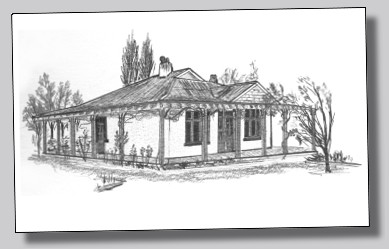 |
| |
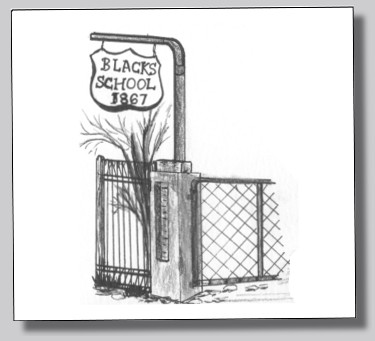 |
16. Blacks School Site
The original stone school and adjacent school house were of stone from the nearby Raggedy Range and opened for business in 1867 with one teacher and 21 pupils. It was replaced by a new school (now a Play Centre) in 1956. It survived for a time but sadly was demolished in 1961 “in the interests of public safety”. Former pupils of the old school can remember the frozen ink in the ink wells on winter mornings and the black currant jam sandwiches wrapped in newspaper.
(Top) |
| |
17. Kintail House (c1917)
This house was built for Martha and Donald McRae and is notable for its unusual construction - solid concrete, poured behind a mould of slatted and figured boxing to give the exterior a chiselled stone block appearance. Donald, who came from the Shetland Islands, was head shepherd on Moutere sheep station and used to import collies from Scotland to muster and work sheep.
(Top) |
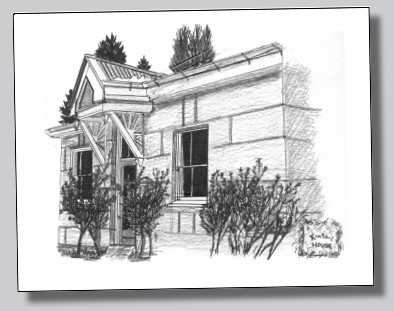 |
| |
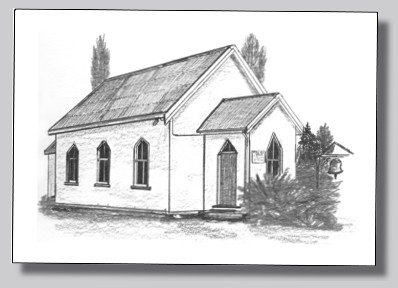 |
18. Union Church (1897)
This simple gothic church, still referred to as St Andrew’s Presbyterian Church, opened for worship in March, 1897. The vestry, which doubled as a Sunday School, was added in 1931. More recently the timber cladding was roughcast.
(Top) |
| |
19. Isbister Cottage
At the end of the main street turn right at Blacks Hotel and walk a short distance for a roadside view of Isbister House. Malcolm Isbister from the Orkney Isles built this home into the face of the foothill known as Brandy Hill. It has been altered over the years.
(Top) |
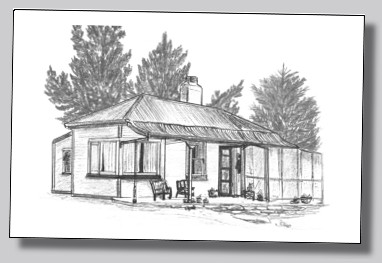 |
| |
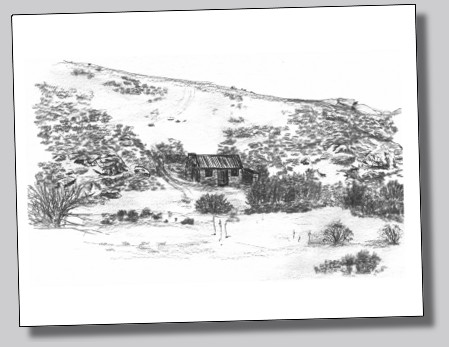 |
20. MacTavish’s Hut
A kilometre further up the Ida Valley Road (maybe a little too far to walk!!) on the right is a restored miners hut. The two-room hut was built on an acre of mining land owned by Lockhart McTavish. At one stage it was occupied by Clem Daniels a goldminer who ended his days there at an advanced age. Clem used to dress in a blue suit when he went to Ophir and being keen on cricket used to umpire matches marking the number of balls bowled with his walking stick. It was always obvious when he found gold – he would hold a roaring celebration at the old pub. (Privately owned, not open to public)
(Top) |
| |
21. Blacks Hotel (1937)
The art deco style Blacks Hotel was established when a new bridge crossing the Manuherikia River to Omakau was built and what was known as the Ophir lane became a highway. The site was originally occupied by Micky Moran’s stone cottage. An Irishman with a very thick brogue Micky kept the community amused with is exploits and sayings. Micky installed power when electricity came to the district about 1930 and it is recorded it took him three days before he found how to turn it off. The original Blacks Hotel, a picturesque stone building, was in the main street but has been demolished.
(Top) |
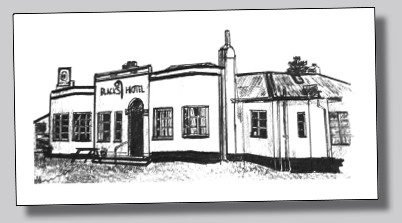 |
| |
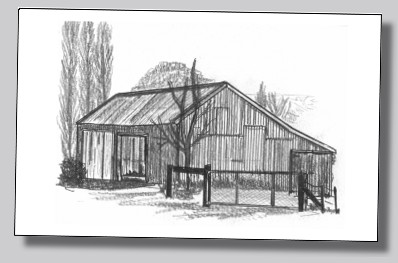 |
22. Malcolm Isbister’s Shop
The galvanised shed on the site was once the Isbister carpentery shop. In later years a crib was moved onto the rear of the section for use as a holiday home.
(Top) |
| |
23. McKnight’s Cottage (c1904)
Local builder, blacksmith, funeral director and Vincent County councillor, John McKnight is thought to have built this mud brick house about the time of his marriage to Eliza (nee Pitches) in 1904. As well as being responsible for several buildings in Ophir, he also built the Bank of New Zealand in Omakau. The corrugated-iron workshop next door was the McKnight brothers blacksmith’s shop. It is very old and was probably established before the house.
(Top) |
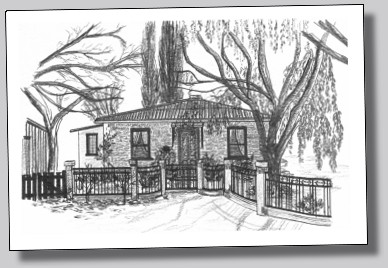 |
| |
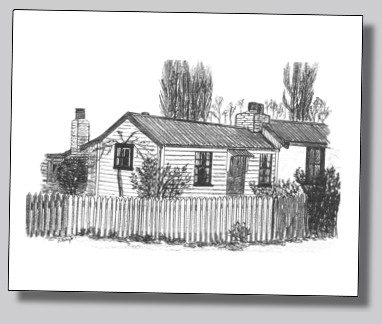 |
24. Elm Cottage
This humble timber cottage is unusual in that its lean-to is built of stone. Adding to the mix of materials is a mud-brick addition at the side, all carefully restored. Behind is a stone and pose de terre bunkroom. The original two-room cottage dates back to early mining days.
(Top) |
| |
25. Stone Barn
The handsome stone barn is part of Elm Cottage’s complex of buildings. It has a lean-to of iron and a two-stall stable behind. It belonged to the McKnight brothers who built various horse-drawn vehicles in early times. It was also used as a smithy and a hay barn. Note the sluice channel running alongside it which is a continuation of the channel on the opposite side of the street.
(Top) |
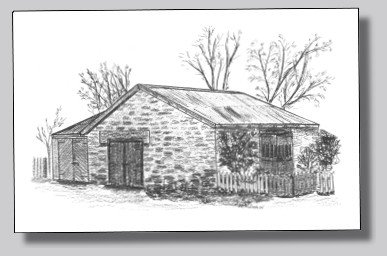 |
| |
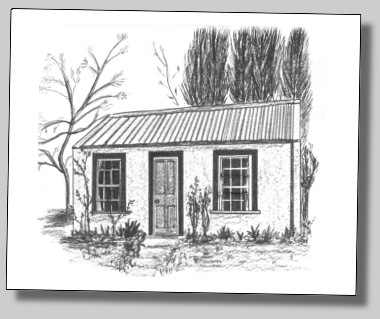 |
26. Larson House
This is actually two two-room cottages, one placed in front of the other. The front part is thought to have been the town’s athenaeum, shifted from further down the street. The rear cottage dates back to mining days. Both are corrugated iron, with a more recent plaster overcoat. The neighbouring stone cottage is said to have once housed a smithy.
(Top) |
| |
27. Shamrock Hotel Ruins
The roughcast cottage on the next corner was the original site of the Shamrock Hotel. Walk down McDonald Street and you can see the ruins of the hotel’s stone stables through the cottage garden.
(Top) |
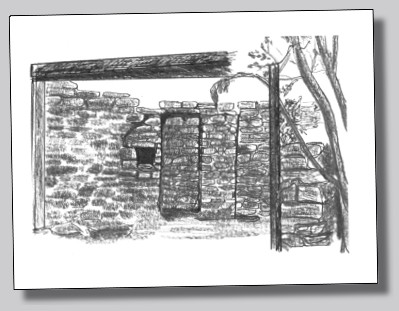 |
| |
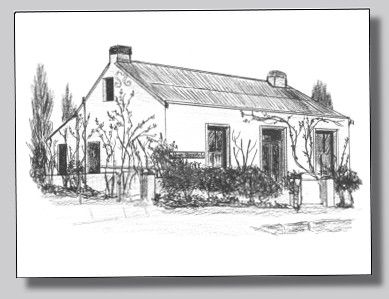 |
28. Cottage Hospital
The name of this unusually large cottage of the Scottish farmhouse type reflects its early use, very likely doubling as both hospital and doctor’s residence. Beneath its later coating of cement render is solid stone. Early photos show the cottage with a deep front verandah.
(Top) |
| |
29. The Old Drapery
This early building both shop and living quarters was owned by Mrs Ellen Craig who let it out to various people. Mrs Craig lived with her husband next door in the former Bank of New Zealand residence which has been demolished.
(Top) |
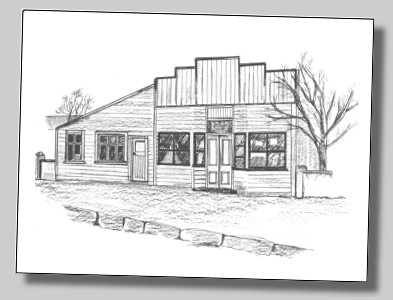 |
| |
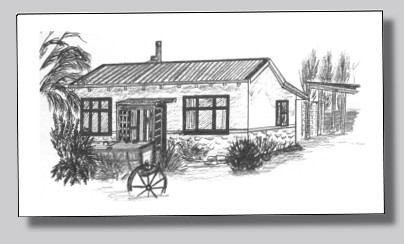 |
30. Redroost Cottage (1884)
Redroost cottage was built by Peter Harrington. It was a timber construction but at some later stage was roughcast.
(Top) |
| |
31. Hollyhock Cottage
Originally a 2 roomed hut it was moved to this site from the Ida Valley in the 1940’s. The cottage has been added to over the years.
(Top) |
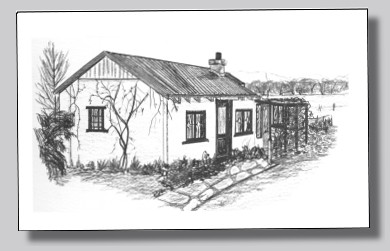 |
This ends your journey through Ophir. If you are leaving via the old bridge look to the left and you can see the remains of the stone abutments to an old swing bridge. This was a prominent mining area that Chinese miners worked over in the old days. The “Golden Gate” mine was located here and water was piped over the gorge by a race built from the Chatto Creek. The Chinese miners, who at one stage outnumbered the European population, often picked over diggings left by others. They were hard workers living and working with primitive facilities and must have had a miserable existence surviving in the extremes of the harsh Central Otago weather. |
So laugh with me now or cry with me now
As you tramp those memoried tracks
For they all lead down to Ophir Town
And the old time town of Blacks.
(Todd Symonds) |
Acknowledgements
Lois Galer
Anne Wright (Artist)
Ophir Welfare Committee
New Zealand Historic Places Trust |
Reference
'Ophir Memories'
Ken Leask - author & publisher
Second edition - printed 1995
(Top) |

